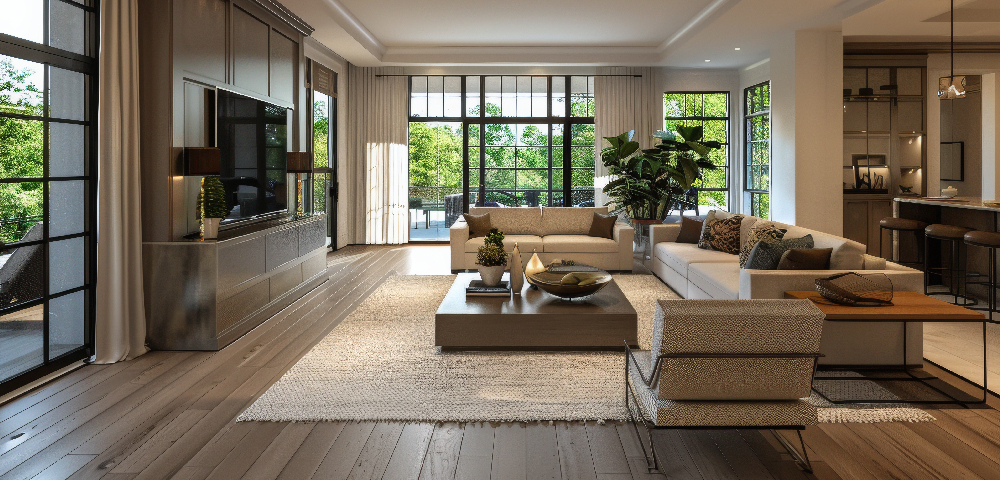The Art of Wellness: Creating Homes that Heal and Inspire
By design pataki
December 06, 2024
While daily routines and lifestyle choices significantly contribute to well-being, the environment you inhabit plays a crucial role in shaping your overall health–from the colours that adorn your walls to the sunlight streaming through your windows. This is why intentional design is essential. Creating wellness-focused, soothing home décor involves employing design principles that nurture and rejuvenate our mind, body, and spirit, without compromising on aesthetic value.
1. Enhance Air Quality for Healthier Living

One of the core goals of wellness-focused design is to promote clean, healthy air circulation. Good airflow revitalises a space by minimising indoor toxins that can negatively impact respiratory health. Incorporating large windows, open floor plans, and high ceilings into your home décor enhances ventilation, allowing air to flow freely and create a more breathable environment. Indoor plants also play a vital role in improving air quality while adding a calming, natural element to your home. Varieties like peace lilies, snake plants, and English ivy are renowned for their air-purifying properties, which can enhance sleep and boost mood. Additionally, investing in air purifiers and humidifiers if outdoor spaces are limited, can further contribute to a breathable environment.
2. Aspire to Connect with Nature

Biophilic design focuses on integrating natural elements into your home interior design to foster a connection to the outdoors. Bringing indoor plants into the home is one approach, offering aesthetic appeal and health benefits by purifying the air. Beyond plants, biophilic design also embraces natural materials such as wood flooring, stone countertops, and nature-inspired wallpapers, creating a tactile connection to nature’s textures and forms. These elements work wonderfully to craft calming interior design that feels grounded and soothes the senses.
3. Maximise Natural Light to Brighten Your Space

Light plays a pivotal role in regulating our circadian rhythm—the internal clock that dictates our sleep-wake cycles. Inadequate natural light can leave you feeling groggy, while harsh artificial lighting can disrupt sleep. To create a balanced home décor setup, opt for large windows that let in as much daylight as possible and use sheer curtains. If natural light is limited, consider cool-coloured bulbs during the day or tuneable LEDs that adjust with the time of day, contributing to calming home décor. Mirrors and reflective surfaces can also help amplify daylight, brightening up spaces naturally. Finally, for evening relaxation, use warm-toned light bulbs to signal to your body that it’s time to unwind.
4. Prioritise Non-Toxic and Sustainable Materials

Choosing eco-friendly, non-toxic materials is crucial in wellness-focused home interior design. Many conventional materials emit harmful chemicals that can degrade indoor air quality and potentially affect health. Avoid high-VOC (volatile organic compound) paints, chemically treated woods, and synthetic fire-retardant fabrics. Instead, consider options like wool, bamboo, cork, clay, and stone, which are healthier and environmentally sustainable. These materials minimise exposure to toxins and also add warmth and texture to your home, which in turn supports more positive, mindful interior design.
5. Use Colour to Cultivate Calm and Comfort

Colour psychology is a powerful tool in wellness home interior design, as colours influence our emotions and energy levels. Bedrooms, as spaces for rest and rejuvenation, are ideal for applying soothing home décor ideas. Opt for a wellness-centric palette with calming shades like soft whites, neutrals, and earth tones, which create a balanced and grounded atmosphere. For those who enjoy colour, incorporate greens and blues, which evoke a sense of peace and relaxation. Lavender and pale pinks can also add subtle touches of calm without overwhelming a space. This approach creates a soothing environment that enhances mood and comfort while fostering a feeling of warmth.
6. Create Spaces That Encourage Movement and Mindfulness

To support physical wellness, consider setting up specific areas in your home for movement and mindfulness. A yoga or meditation corner, a home gym, or even a cosy reading nook on the balcony can be wonderful additions. These dedicated spaces make it easy to practise self-care, whether it’s through meditation, light exercise, or simply unwinding with a book. Designing such spots to be inviting and tranquil can motivate you to use them regularly, making wellness an integrated part of your home life.
Wellness design invites us to embrace relaxing home decorating ideas that inspire balance, comfort, and a lasting sense of peace. In a fast-paced world, designing for wellness reminds us that home is more than a place—it’s a source of renewal and joy. Through relaxed modern interior design, we can create surroundings that look beautiful and also nurture our physical, emotional, and mental well-being, turning our homes into true sanctuaries.
A series by Design Pataki
You may also like



 Enquire
Enquire
 Call
Call
 chat
chat
 Search
Search





